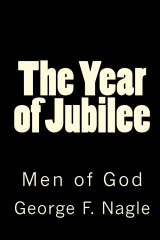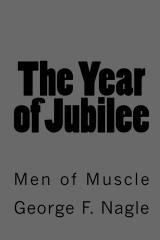
Harrisburg on the eve of Civil War
Study Areas
Recovering Fugitive Slaves; Two Early Test Cases
Recovery Versus Resistance in Pennsylvania and New Jersey
From the earliest days of slavery in America, enslaved persons fled their bondage and sought refuge anywhere they felt relatively safe from being hunted down by their former enslavers. After Pennsylvania passed the Gradual Abolition law of 1780, the commonwealth became a destination for those seeking freedom. Slave holders who entered the Keystone State in pursuit of fugitive slaves were frequently treated with contempt and scorn by Pennsylvania citizens, who resented the disruption of their communities and abhorred the sight of human beings shackled and forced back into enslavement. Increasingly, local authorities declined to aid slave hunters and residents provided shelter to freedom seekers.
The U.S. Constitution included a clause providing for the recovery of fugitive slaves in other states, but it lacked teeth. In response to the protests of Southern slaveholders, Congress passed the Fugitive Slave Act of 1793 in an attempt to adjudicate disputes. County judges, however, found wide latitude in interpreting how the Act mediated between the rights of slaveholders to seize fugitive slaves and the rights of states to guarantee freedom, until proven as property, to those seized. A number of early cases stand out for their negative effect on the attitudes of Pennsylvania citizens toward the Fugitive Slave Act, and further pushed Pennsylvania legislators to pass Personal Liberty Laws.
Violent Resistance in Hatboro, Pennsylvania
In 1821, 29-year-old Jack escaped from Caleb Johnson, a slaveholder in Princeton, New Jersey. Jack found refuge with abolitionist Quaker farmers near Hatboro, Pennsylvania named John and Isachar Kenderdine. The Kenderdine family was well respected in the community, and Jack, feeling safe, settled down with them as a hired hand. Caleb Johnson, however, received information on Jack's whereabouts, and set out in a wagon with his brother Ralph and two friends named Withington and Skilmore to capture him. The Johnson party arrived in Hatboro before sunrise on the morning of Sunday, October 20, 1822, and stopped in a local tavern run by a Mr. Marples. A year after the 1833 Hatboro damages suit, the attempted recovery of a group of suspected fugitve slaves sheltering in Salem, New Jersey went very wrong for a Philadelphia constable who was leading the gang of slave catchers. Very early in the morning of 29 December, 1834, the town of Salem, New Jersey was awakened by cries of "murder" and "fire," and by the pealing of the fire alarm bell at the town's fire engine house. Startled citizens ran into the streets, but instead of a fire, found a wagon filled with eight Blacks being driven through the town by a group of slave catchers. The eight people chained in the wagon had been rounded up from their homes several miles outside of town, forced, still in their nightclothes into the wagon, manacled, and were being taken to town for a hearing to allow their captors to return them to ensalvement in Maryland. But upon entering the town limits, they began the crying and shouting that awakened their neighbors. Sources for the Hatboro Incident:
Sources for the Salem, NJ Incident:
At the tavern they let their intentions be known, determined exactly where the Kenderdine farm was located, and planned their moves. They set out for the John Kenderdine farm, about four miles distant, and arrived near dusk. John and Isachar Kenderdine were away from the farm at the moment they arrived, so three of the party remained with the wagon while one man knocked on the farmhouse door, pretending that he needed assistance due to an accident that had occured with the wagon. He was let into the farmhouse and immediately recognized Jack who was inside. The other three descended on the farmhouse and captured Jack, who was placed in fetters in the wagon. Having captured their man, they set out on their return to the tavern.
Isachar Kenderdine arrived just as they were leaving and demanded to know by what authority they were taking Jack. They told him to come to the tavern and they would prove their claim to the man. The Johnson party left the farm and had nearly reached the taven when a large group assembled by John and Isachar Kenderdine caught up with them. The confrontation quickly descended into violence as the pursuing group, made up of white and Black men and women, armed with clubs, attempted to stop them. Isachar Kenderdine moved to grab the head of one of their horses and one of the slave catchers threatened to blow his brains out. Then Caleb Johnson received a serious head wound from a stone thrown by one of his pursuers and the fight went out of them. When they finally reached the tavern, a group of between forty and fifty local citizens surrounded them.
The assembled crowd forced the New Jersey men to go to Montgomery County Associate Judge McNeil's house to prove their claim to Jack. Caleb Johnson, suffering greatly from his head wound, pleaded to rest until morning, but the crowd, which included a local Justice of the Peace, forced them all to the county judges's house. Judge McNeil listened to the stories and decided to delay a hearing on their claim. He had Jack confined until his hearing and also bound over all four of the New Jersey men unti they could prove their claim. The crowd escorted them back to the tavern where they remained, not permitted to leave, until Monday when they would be charged with kidnapping. During the night Withington escaped from the crown surrounding the hotel and contacted friends in New Jersey.
Sometime during the night Caleb Johnson agreed to manumit Jack if the Kenderdines would drop the kidnapping charge, but John Kenderdine refused, instisting they be prosecuted. On Monday the three remaining New Jersey men appeared before Justice Tompkins to answer the charge of kidnapping. The grand jury listened to the prosecution and found a true bill against the men. Unable to provide bail, they were returned to confinement at the tavern to await a trial. That day, Withington returned to town with a number of friends of the New Jersey party, who provided the security to release them until their trial. That trial took place later, in Norristown, Montgomery County, and the defendants were found not guilty of kidnapping. Judge Jones ordered that Jack be restored to Caleb Johnson as his slave. Ironically, Johnson followed through on his offer to manumit Jack, doing so shortly thereafter.
The case did not end there, however. Johnson sued the authorities in Hatboro and the Kenderdines for $10,000 for the violent confrontation as they were attempting to recover Jack, and for falsely imprisoning himself and his friends. A lengthy legal battle followed, and in April 1833, in the District Court of the United States in Philadelphia, a jury found for Caleb Johnson, awarding him $4,000 in damages. This result was universally hailed in the southern states as a clear victory for slaveholders. News coverage of the trial noted in coverage:
The charge of Justice Baldwin, was eloquent and conclusive, and afforded a striking commentary, on the recklessness of those who assert that the North is interfering with the peculiar property of the South: he expressly informed the jury, that a master has the right of arresting his slave, without a warrant, and carrying him before any competent tribunal, in order to prove his property; that he is not required to answer the questions of any one, except those of the legal magistrates, and that parol evidence is sufficient to show the validity of his claims in the absence of a bill of sale. His address was adverse to the defendants, and should be spread widely, for it would have a powerful influence in allaying the fears of one section of the country on this subject. -- The jury gave a verdict for plaintiff, and awarded damages at $4000.
Recovery Gone Wrong in Salem, New Jersey
Excited citizens, bundled against freezing temperatures and falling snow, gathered around the pitiful captives as the wagon stopped in front of a local hotel. Guarding the captives were slaveholder Thomas Culbreth, of Caroline County, Maryland, who claimed the woman Bet as his slave, and a constable from Philadelphia named Michael Donahower. The latter, clearly out of his jurisdiction, claimed to be working as power of attorney for one of the Maryland slaveholders. The accused fugitive slaves were taken into the hotel for protection from the cold, and to await a slave hearing from the local judge.
At 10 a.m., Salem County Court of Common Pleas Judge George Bush called the woman Bet into his courtroom for slaveholder Thomas Culbreth to provide the necessary proof and identification required for her return to slavery. In the preceeding hours, a large crowd of curious and excited local citizens, white and Black, had gathered to witness the proceedings. Small children were among those in the group to be taken back to Maryland, and emotions were running high. While Bet sat in the courtroom with a small child on her lap, Justice Bush examined the documents provided by Culbreth and the warrant issued by a judge in Maryland, and listened to the counter arguments supplied by attorneys for both sides. At the end of the arguments, Judge Bush ruled that the supplied proof was not sufficient proof and dismissed Bet.
Accounts of the trial differ dramatically at this point. Bet was still in the courtroom when a severe fracas broke out between constable Donahower and several of the onlookers. By one account, Donahower drew his pistol when the judge ruled against the slaveholder and dismissed the accused slave, cocked it, and declared that he was going to hold and protect the property under his charge. A sharply conflicting account described how the judge left the courtroom after dismissing Bet from the charge, and the onlookers urged her to leave as a free woman. At this point Culbreth declared that he had the right under the Constitution to claim her, and Donahower shouted that he was officially arresting her by authority of the act of Congress. An onlooker lifted a chair as if to strike Culbreth and Donahower, and Donahower drew his pistol only in self-defense.
Regardless of the sequence of events, Donahower drew his pistol and it was wrestled from him by the town constable. He then drew a knife but that, too, was wrestled from him by the sheriff, who had now entered the fray. In the chaos, Bet, and presumably her child, escaped out of a window. Donahower was taken to jail, where he remained for several hours until bail was arranged. The sheriff took charge of the remaining persons accused as fugitive slaves until their casees could be heard the following day. That Tuesday, arguments were heard but the case was adjourned until the first Friday in March.
While the results of the March 1835 trial are not known, Culbreth did not accept the loss of Bet and her child easily. He sued several residents of the town in New Jersey Supreme Court for aiding her escape, seeking $10,000 in damages. The eight-day, 1835 case was decided in his favor, being awarded $6,000 for the loss of Bet and her child.
Donahower's legal fate as a result of the Salem fracas is not known, but it did not stop him from his slave-catching activities. In 1837 he was reported as the agent of a Norfolk, Virginia slaveholder who had just received judgement in favor of reclaiming a woman and two children. In another report, he had established a regular operation for capturing suspected fugitive slaves in Philadelphia as well as in Salem, New Jersey. These cases, and the regular reports of kidnappings, trials and incidents of violent resistance were quickly adding up to change the climate of public sentiment regarding slave catching in Pennsylvania.Sources
The Year of Jubilee
Vol. 1: Men of God and Vol. 2: Men of Muscle
by George F. Nagle
Both volumes of the Afrolumens book are now available to read directly from this site.



